Queen Bee Life Cycle
From the very beginning of the life cycle of a queen bee the colony invests a lot of hope in her success. You might think a queen lives a charmed life. Her existence has been romanticized-as a life of ease with only 1 job to do. But, from the moment she emerges from her cell, the colony’s future depends on her being able to fulfill her duties. Whether you are an experienced beekeeper or simply a bee-enthusiast, the story of the queen honey bee is not one to miss.
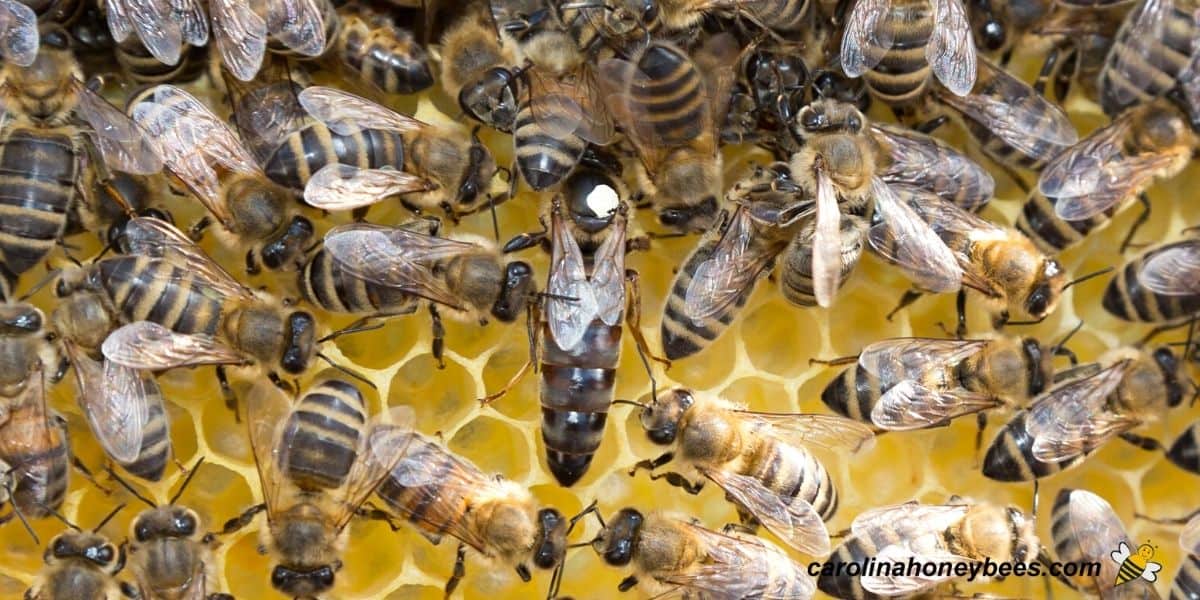
We beekeepers spend a lot of time thinking about and worrying about the queens in our colonies. We can memorize all the queen bee facts in the world – but even that will not completely reveal her significance. She is so much more than an egg-laying machine.
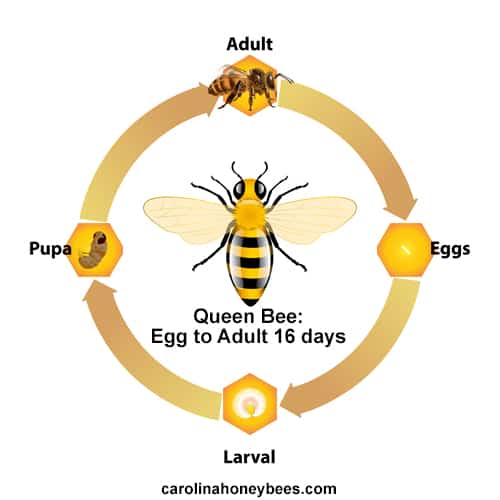
The major difference is the time frame from egg to adult. Worker bees become adults in 21 days (on average) from egg laying. While drones (male honey bee) require 24 days to emerge from their brood cell.
However, a queen bee can be produced in only 16 days! She has the shortest development time of any bee in the colony.
As with any living thing, honey bees have a life cycle that consists of different stages of development. This is true also for the most important member of the hive – the queen honey bee.
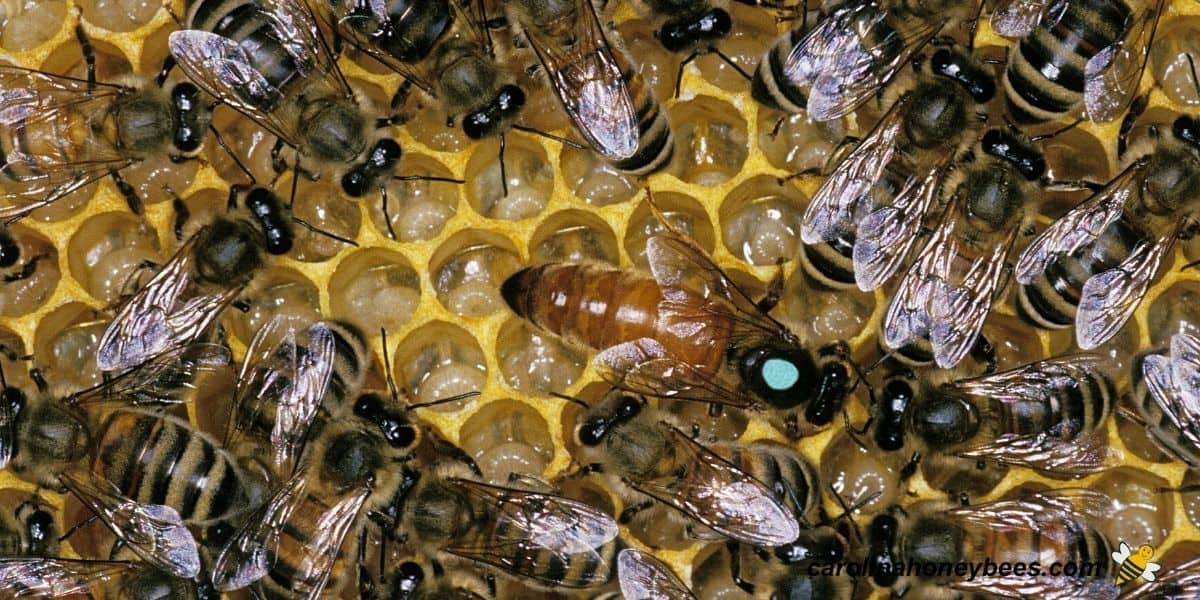
Why Colonies Create New Queens
From time to time, the colony will need a new queen. There are several reasons to replace the current monarch.
- the old one has died
- a current one is failing
- or the colony may be preparing to swarm
As the queen grows older, egg laying slows. There are only a limited number of eggs stored in the abdomen. When they are gone-that’s it.
She may also run out of stored semen. When she becomes unable to lay fertilized eggs, she becomes a drone-layer. Honey bees will kill a failing queen. If the colony waits too long, they may not have the materials needed to replace her.
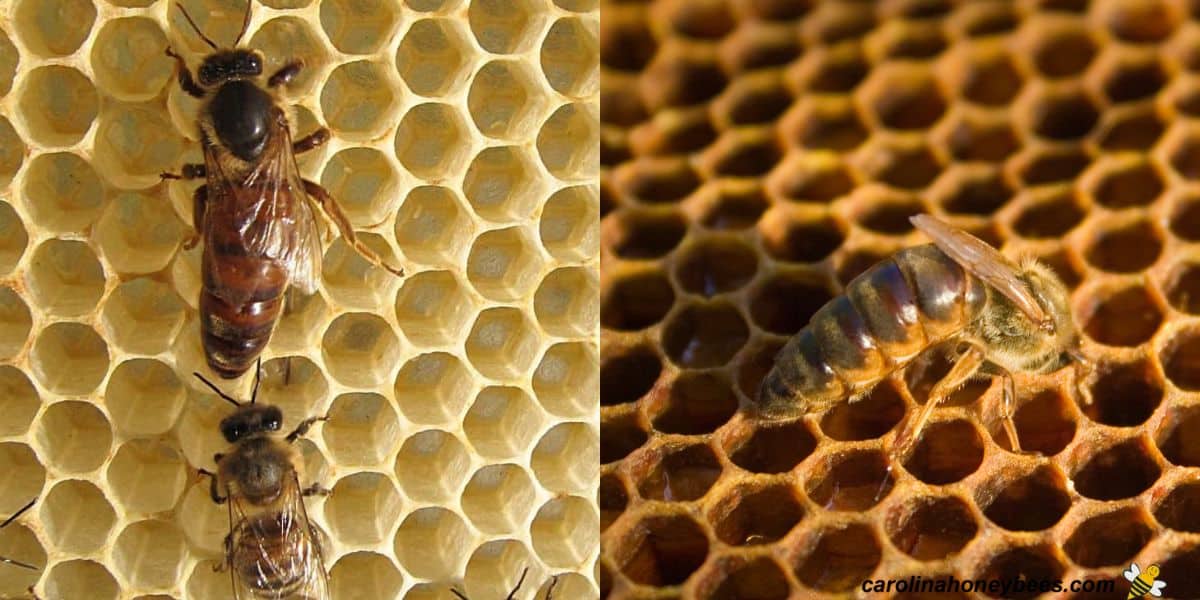
How Bees Make a Queen
The queen bee life cycle begins when the eggs destined to become a queen are laid. Most of the time. Sometimes, the bees must use the resources they have on hand.
The process of queen rearing begins early in the development process. In the beginning, any very young female larva (from a fertilized egg) has a chance to develop into a reproductive female.
Fertilized Eggs are Laid
In a planned replacement, the current queen is encouraged to lay eggs in special cells (queen cups). These eggs are fertilized with semen stored in the queen’s abdomen. They will become female bees.

What if the queen bee has died or is no longer able to lay fertilized eggs? This is an emergency situation, worker bees select the most suitable larvae already in the comb.
But, the window of opportunity closes quickly. Larva older than 2 days do not make the best queens. This is why timing is important to the colony.
However, once a egg is laid in a queen cup – it is now called a queen cell. The queen bee life cycle has begun.
After 3 days, the egg hatches (it doesn’t really hatch like a chicken egg – the shell itself dissolves). It is now called a larva.
Larval Stage
Just as with workers or drones, the larval stage of a queen bee’s life involves eating and growing. And oh boy does she eat well! This the where the magic starts to happen.

Workers serving as nurse bees feed the larva a special solution produced from glands in their mouths. Larva destined to become royalty (a queen), are fed an abundance of special food – including royal jelly.
The type and quantity of this larval diet is different than regular brood food. This special diet is what makes the larva develop into a queen rather than a worker bee!
The size of a queen bee is affected by feeding during development and genetic. Those reared in emergency conditions are not always the best quality.
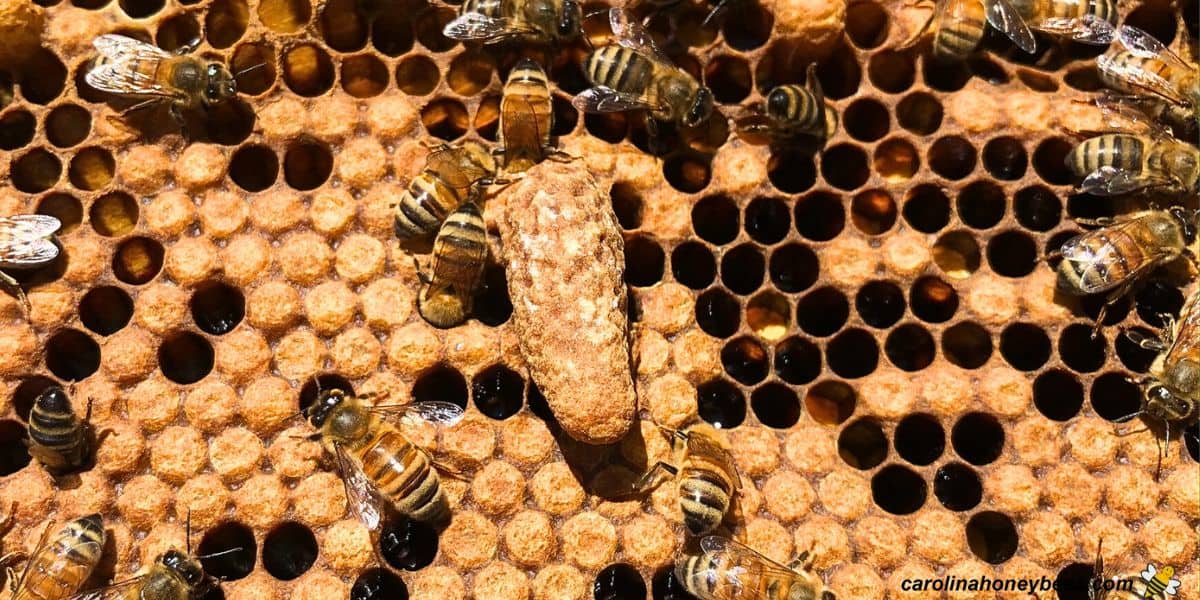
Queen bee larvae grow much larger than regular worker bees. They will not fit into regular honeycomb cells. Worker bees build a large peanut shaped cell around the growing larva.
This is the easily recognizable sign that queen rearing is happening. It is normal for a colony to have more than one queen cell at a time.
Pupal Stage

Around day 7 ½ (from egg laying) the queen larva is finished feeding and ready to transform to the next stage. Worker bees cap the cells with wax. On day 8, the larva becomes a pupa.
Inside this capped queen cell, the final transformation takes place. The larva spins a cocoon and transforms to a pupa. Now the final molts occur and our new queen really begins to look like a queen bee.
Adult Stage
Around day 16 a new queen will emerge from her cell. She is fully formed though her abdomen is smaller than it will be after mating.
What is the first thing this she does? In most cases, she searches out any possible rivals in the hive. When she finds them, she will chew into the cell and kill the virgin queen inside. Being royal is messy business.

Queen Bee Mating
After maturing for a few days, the new queen must leave the hive to mate. Bees must mate to reproduce and it does not take place in the hive.
She may fly a mile or more to special areas called drone congregation areas. (No, we don’t know how the bees know where to go).
One of more mating flights occur until the special organ in her abdomen that stores semen is full (Spermatheca). After that time, she will never leave the colony again. (Unless the queen leaves with a bee swarm).
Duties of the Queen Honey Bee
Unlike workers, the role of the queen bee is well-defined and does not change. She is the only member of the colony that can lay fertilized eggs – which become workers. This sexually mature reproductive female is the mother of all the members of the hive.
In addition to egg laying, her special queen bee pheromones tie the colony together as a social unit. If she is missing, the colony becomes aware very quickly.
Is She Really in Charge?
It would be a great story if the life span of a queen honey bee covered many peaceful years of the good life. Alas, that is not usually the case.
As if to keep this “royal bee” humble, her rule and very existence depends on the work of many individual bees. She does not feed or even clean herself but depends on care from others.
She will only lay eggs in cells that are polished by the workers. She is not the decision maker in the hive. That’s a bummer – I had always believed that the queen was the ruler of the colony.
Aging and Decline
Even though a queen lives longer that worker honey bees live, she is likely to fail before her possible 5 or 6 years of age.
In my colonies, I rarely have a queen bee that lasts in the hive more than 2 years. It is often a much shorter reign. Some colonies replace poor performing queens after only a few months.
This is one of the challenges of beekeeping, to ensure that you have good queens in your hives. The quality of bees seems to be dropping in recent years with queen bee life spans growing shorter.
When her egg laying drops significantly, and/or her pheromone levels drop and fail to make the colony feel peaceful. Plans will begin to start over with a new queen.

Final Thoughts
Our bee colonies have a remarkable ability to create a new reproductive female when needed. Given the right materials, a viable population and a little time, they can create a new queen when the life span of the current one comes to an end. As beekeepers, it is our job to ensure that the colonies have a chance to continue.

